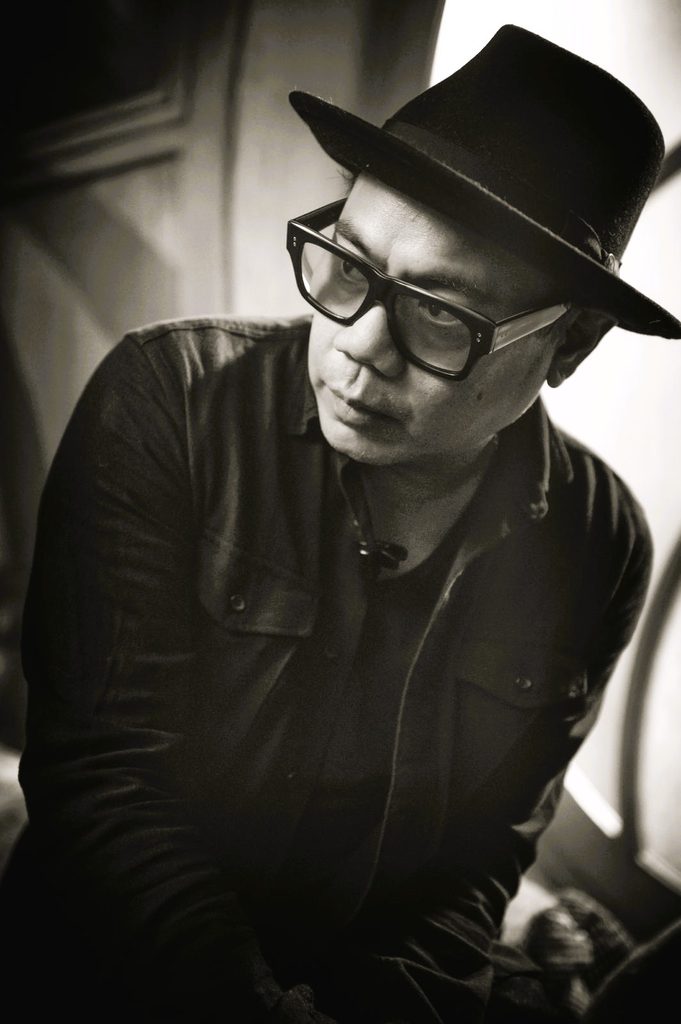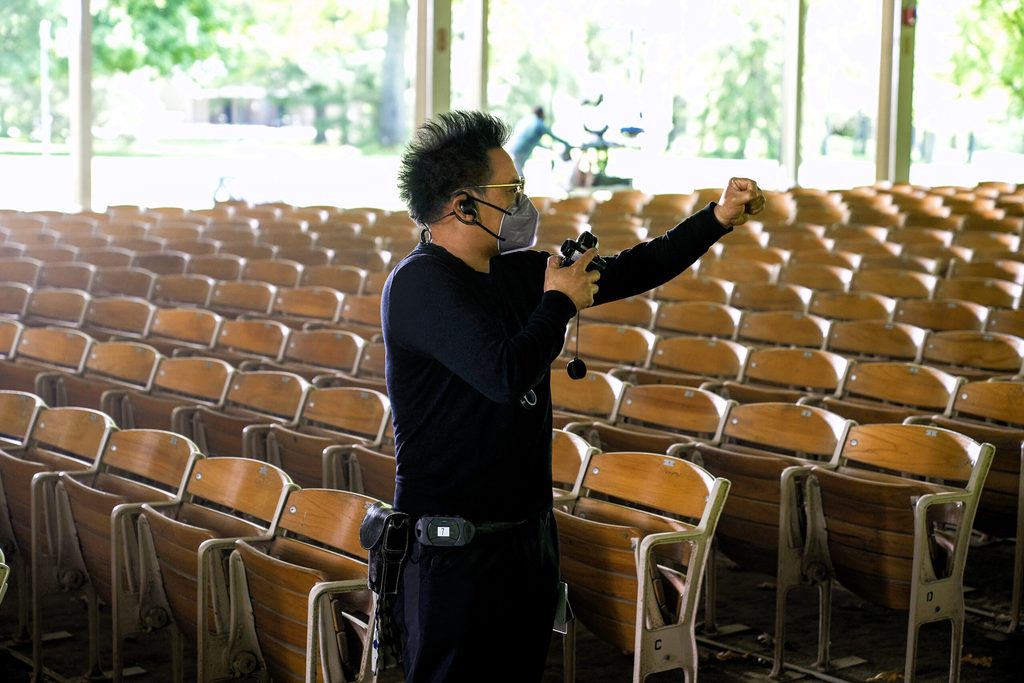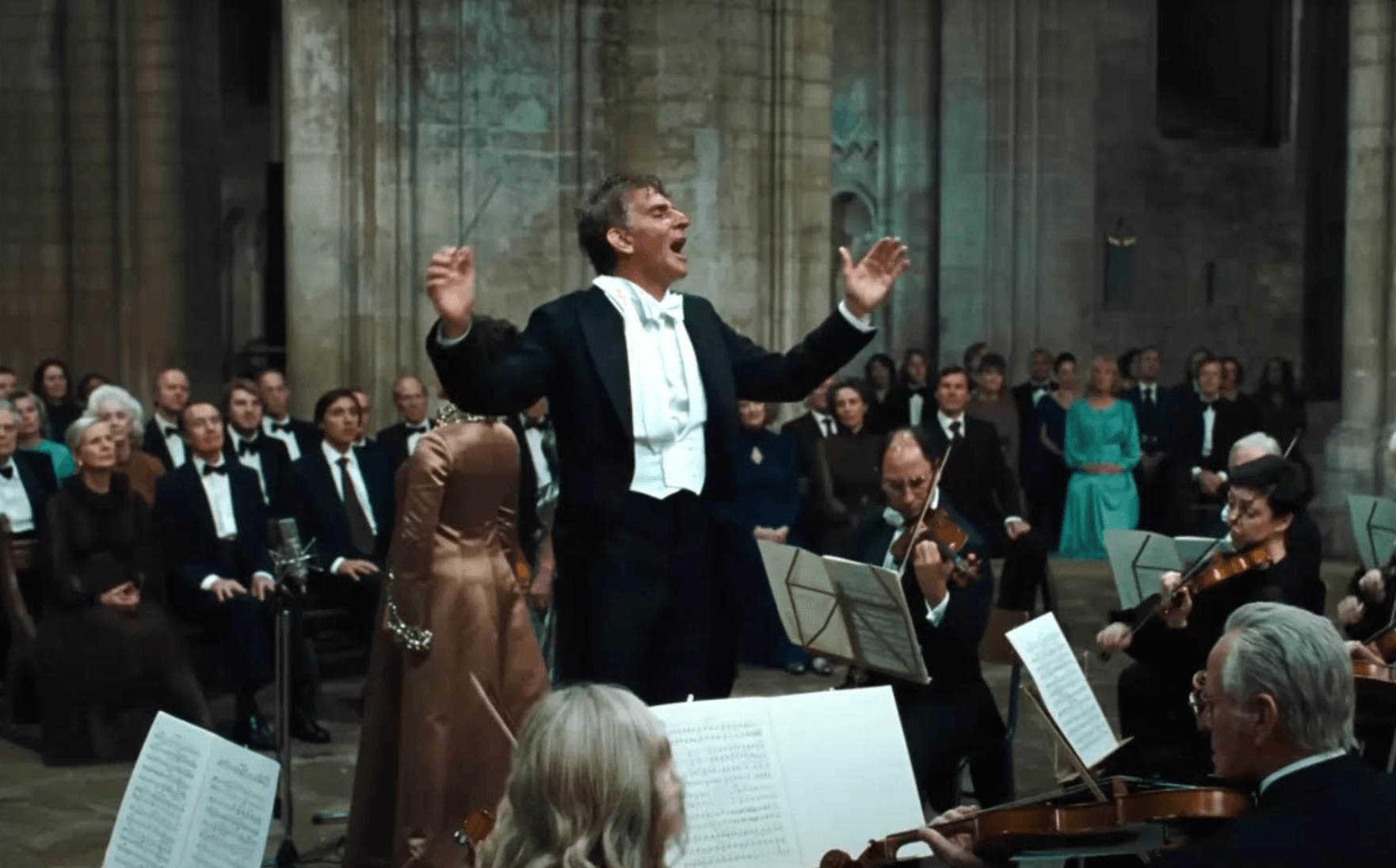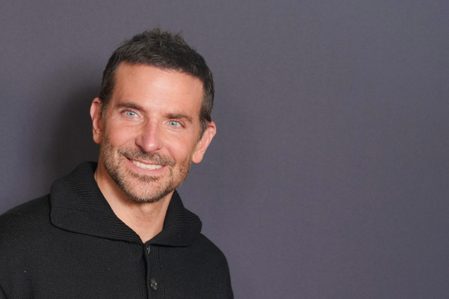SUMMARY
This is AI generated summarization, which may have errors. For context, always refer to the full article.
![[Only IN Hollywood] Fil-Am DP Matthew Libatique on his work in ‘Maestro,’ a best film contender](https://www.rappler.com/tachyon/2023/12/matthew-libatique-maestro-december-20-2023.jpg)
LOS ANGELES, USA – “You can never take it for granted, despite the success of an experience like A Star is Born, that it was going to happen but it did,” Matthew Libatique, one of the best cinematographers today, said about working with Bradley Cooper again.
The result is Maestro, a best picture contender this awards season, whose many strengths include Matthew’s masterful cinematography, which I dare say is his finest work to date.
Collaborating with Bradley, who also stars as Leonard Bernstein, one of the music giants of the 20th century, the Filipino American DP compellingly captures with his camera various periods, from the black and white 1940s, the Technicolor 1960s and 1970s, to the 1980s.

While it shows the rise of Bernstein from an assistant conductor suddenly asked to wield the baton before the New York Philharmonic to a world-renowned composer, pianist, educator, author, and of course, conductor, Maestro centers on the relationship of the music legend and his wife, actress Felicia Montealegre (Carey).
The famously spike-haired cinematographer, popularly known as Matty, catches with his camera the excellent performances of Bradley, as the genius maestro who has homosexual dalliances, and Carey, the long-suffering wife who is aware of her husband’s relationships with men.
I have seen Maestro about four times already and I came away even more impressed. A scene that gloriously reenacts Bernstein (Bradley, going all out, at his best) conducting the London Philharmonic in a cathedral in 1973, ending with shots of Carey on the side, is one of the most beautiful I have seen in recent cinema.
Written by Bradley with Josh Singer, Maestro is reaping year-ending plaudits, including praises for Bradley (also as a director) and Carey. Matthew has a shot at earning his third Oscar cinematography nomination, following his nods for A Star Is Born (2019) and Darren Aronofsky’s Black Swan (2011).
Matthew worked again with Darren in Postcard from Earth, a multi-sensory wrap-around 4-D film, lensed by the DP with groundbreaking 18K cameras, that is wowing crowds at Sphere, a huge, domed new space in Las Vegas.
I recently talked about Maestro, which begins streaming on Netflix on December 20 after its theatrical run, and Postcard from Earth in my Rappler video interview with the son of immigrant parents from the Philippines.
![[Only IN Hollywood] Fil-Am DP Matthew Libatique on his work in ‘Maestro,’ a best film contender](https://img.youtube.com/vi/-EqUhyLWKuk/sddefault.jpg)
Both these films come at a time when Matthew celebrates his remarkable 30-year career thus far, which began with shorts and music videos, followed by his collaborations with noted filmmakers aside from Bradley and Darren – Spike Lee, who once playfully complained to me that he can no longer get Matty as DP because the latter has become so busy, Jodie Foster, Olivia Wilde, Jon Favreau, and Joel Schumacher.
The interview was edited for brevity and clarity.
Let’s start by talking about how this is your second collaboration with Bradley after A Star Is Born. When Bradley asked you to work with him again on Maestro, what were your immediate thoughts and reactions?
I was elated when he asked me to make the film and told me he wanted to work with me again. You can never take it for granted, despite the success of an experience like A Star is Born, that it was going to happen but it did. I was flattered and immediately went to work.

Honestly, he worked so hard in prep, as hard as he worked in the film. Proceeding, even as were getting a green light, we were shooting tests for hair and makeup and prosthetics, working with Kazu (Hiro, prosthetic makeup designer) way ahead of the game.
And we were able to test formats, film stocks, digital cameras versus film cameras, and lenses. So, we were able to really build the look of the movie over the course of shooting all of these tests.
We learned so much that it informed us how we were gonna approach it. So, it’s a pleasure to work with him again. Like I was saying previously, he has really evolved into a great filmmaker with a voice.
Maestro is obviously a different film from A Star Is Born. What were your specific challenges for Maestro?
I had to relearn black and white. I had to relearn a certain type of lighting. In modern-day cinematography, so much of the light is LED and it’s very soft and there are things about the digital image that require us to light a certain way.
Those same ways don’t work in black and white photography, at least on film. And so, relearning that was a challenge for me.

But I did as much testing as I possibly could so that I could have a better understanding. I could feel free on set to be able to collaborate with Bradley and the actors. I would say that was really the chief concern and anxiety I had – pulling off the black and white photography.
The crucial scene where Bradley, as Leonard Bernstein, conducts Gustav Mahler’s Symphony No. 2 with the London Philharmonic and a choir at the Ely Cathedral is one of the most beautiful shots I have seen in recent cinema. That scene just takes my breath away every time. How did you and Bradley plan to shoot that unforgettable scene? How did you manage to light such a huge space?
The way I managed to light the huge space is I actually trusted the people who I was able to get to work with me on it.
The gaffer had lit spaces like that before. He works in the UK and these buildings, they’re things he’s seen before. And he had a lot of suggestions right away.
I knew I needed a certain type of light for the main area but how I was going to pull the architecture out and the depth of the space at night was a main concern for me. I really utilized their expertise to get that done.

In terms of the camera, we were so inspired. There were things that we had planned to do and that we shot that aren’t in the film.
It’s very similar to A Star Is Born, at the end when you have this one take on Ally (Lady Gaga) on the stage. The scene evolved into basically one camera take that lands at the end of his (Bradley’s) performance over Felicia (Carey) to sort of connect her to the scene.
That evolution is born out of a need, creativity, and a willingness to try to make the scene better.
And something just happened to Bradley. The magic isn’t in the shot of that.
The magic is the performance and the camera that’s allowing this performance to actually happen in front of it and giving you that freedom. And then having the narrative point at the very end of landing over Felicia is the true victory of it.
That scene brings me to the achievement of Bradley as an actor and director. Bradley and Maestro just received four Golden Globe nominations – Best Picture – Drama, Best Director, Best Actor, and Best Actress. Can you talk about Bradley’s dedication to make this film?
He was remarkable. Just the effort that I saw from him day to day and shooting it. I wasn’t there when he first had the idea (to make Maestro) but I was there pretty early.
And his level of concentration and dedication to the project is legendary to me. And on set, his efforts to get ready with Kazu in the mornings before I arrived, sometimes spending six hours in a chair – it’s nothing to sneeze at.
It was incredible. His dedication, you can’t dispute it. It was remarkable.
Bradley spent six years learning how to conduct in the style of Leonard Bernstein. What was that like for you to witness on your camera this performance of Bradley?
It was interesting because I was lucky enough to hang out with Bradley and Gustavo Dudamel (conductor and LA Philharmonic music and artistic director) in LA. And that was inspirational because you’re in the presence of a master.
And, as I was saying earlier, I love being around creative people. Creative people drive me to be better and inspire me and the same thing happened with meeting Dudamel. I felt like I was in the presence of greatness.
And Bradley, watching him soak everything in. But Leonard Bernstein, when you watch footage of him – his gesture and the intensity of his movements is emotional. And I felt that through the camera watching Bradley play Leonard Bernstein.
I felt that through the camera emotionally. Whether it’s pure joy or sadness or whatever he was trying to convey was conveyed through these movements.
I couldn’t tell you what one meant to the other from a musical standpoint. All I know is that on camera, it was emotional.
And for this film, Bradley had to undergo makeup and prosthetics each morning. How did that work out for you and him in planning the shots of that day?
It was what it was. He would show up, he’d do his work, he’d get ready and then, like a normal director and a DP, we’d start working it out at the beginning. It wasn’t any different.
I felt bad for him having to be way ahead of me but like I said, he was dedicated. He did what he had to do to make the film happen.
You also got to shoot the terrific performance of Carey Mulligan. What was your experience like, shooting Carey and her character’s various emotions in the film?
She blew me away every day, to be quite honest. Carey Mulligan, her performance, her persona, the person.
I don’t think that the film would have the visual language that it does without her and what she brought to the table. She allowed the camera to be patient. She allowed a scene to be patient. She has allowed for a camera to sit on two people talking and linger and where you’re never bored.

Because, like a musician, she’s switching notes. She’s playing notes and it’s such a beautiful thing to watch. I can’t say enough about Carey. I credit her with half the cinematography.
How did it excite you to shoot on film, not on digital, and in black and white early in the film and then in color? And to shoot the different periods?
Shooting periods is always fun. What can I say? It’s always a pleasure to go back.
My goal wasn’t to make the film look like an old movie although there are a few shots that sort of feel that way in the film. My goal wasn’t to study old films and then emulate them.
What I was trying to do was create a reality and naturalism within a world that we haven’t seen in a long time. So, looking at the photography of Elliott Erwitt, Roy DeCarava, and some of the heroes of mine, just poring over some old references and getting in tune.
And there was this amazing book by Jim Whiting called The Life and Times of Leonard Bernstein where he interviewed and photographed the family during a vacation in Italy. There are so many candid shots in that book that I kind of fell in love with the way it looked.
So, if anything, that was more of the inspiration, the tactile into what I was doing in the black and white.
In regard to the color, I give all the credit to Mark Bridges (costume designer) and Kevin Thompson (production designer) because the palette made the color work.
I did some manipulations in the stock, how I rated it, how I printed it, but the color that sings in the film is put on the screen by those men.
And you got to shoot in Leonard Bernstein’s actual summer home in Connecticut. How did that feel to be filming in Bernstein’s real-life summer residence?
When we first started working there, I was a little nervous, to be quite honest. Because even though we say we’re going to be very careful, we have a lot of crew coming in, the big equipment being brought in, lights and camera gear and dollies, and we had a crane.
And I was a little nervous that we were going to be stomping around this sacred ground. But immediately you start to feel warmth there. It’s like this warmth of Leonard Bernstein and a sense that creativity is welcome.
And pretty soon, I got over my anxiety about bringing gear all over the place and I was able to ease in. So, I think you could feel the spirit there.
And the family spirit and you can feel it in meeting Jamie and Alex (Bernstein’s children), you could feel it through them as well. What an extraordinary life those two had.
You got to chat with Steven Spielberg, who is one of the film’s producers along with Martin Scorsese, on set. What did you get to talk about with Spielberg and what was it like to have his iconic energy on set?
He’s an inspiration, he’s an institution. He’s a legendary filmmaker and I’m having a conversation with him on set. If I say that you can imagine how cool that was. So, I don’t know if I could even put into words how cool it was.
I can’t wait to watch Postcard from Earth which you shot with your frequent collaborator, Darren Aronofsky. The film is earning raves from people who have seen it at the Sphere in Las Vegas. I understand that MGM had a special new camera created for the film. Talk about that and for those of us who have not seen Postcard from Earth, can you describe what the experience is like viewing the film in Sphere?
There’s one word, immersive. It’s an immersive experience and somewhat experiential because the screen and the image are all around you. You have to look straight up in the air and you can look behind you and you’re still surrounded by the image.
Not 360 degrees but it might as well be because it encompasses your entire peripheral vision. MSG created six 18K cameras all bespoke to this venue, the screen, and this technology. So, it’s quite a feat what they did technically.
There are some bumps down the road technically trying to get our images onto that screen but what a learning curve. All of us learned so much about this and I’m really, really excited to see what happens with the next one.
Like, what are they going to do? How are we going to evolve storytelling in this format? It’s such a huge image that it puts out. I recommend seeing it regardless.
The film is great but just the experience of being in Sphere is you can see it when you’re walking outside in Las Vegas. People just standing outside smiling. It literally makes people happy because it’s just this enormous wonder.
And then you’re inside and it’s a completely different experience. So, I certainly recommend it.
What are you working on next?
I’m trying to get a film in New York. I can’t really talk about it right now but that’s the next thing.
And for my Rappler readers and your Filipino followers, how do you usually spend noche buena or Christmas Eve? Do you have lechon and what other Filipino dishes?
Christmas Eve, that’s usually when we open gifts because when I was a kid, we used to open them at night. So, I still do that.
Right now, I’ve been preferring to eat sinigang. We don’t have enough people to eat the lechon but I love sinigang.
What kind of sinigang? Bangus?
Baboy.
– Rappler.com
Add a comment
How does this make you feel?

There are no comments yet. Add your comment to start the conversation.